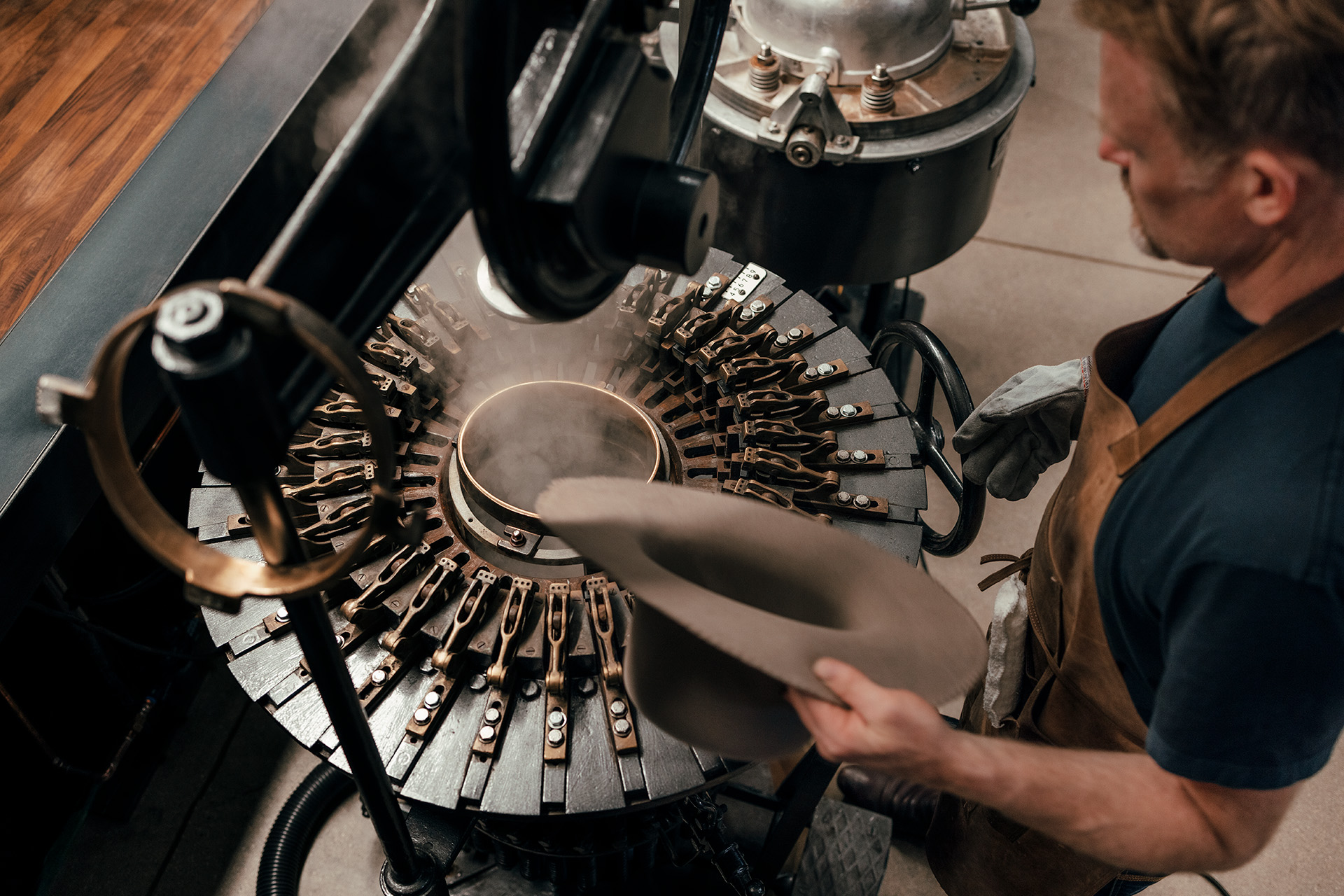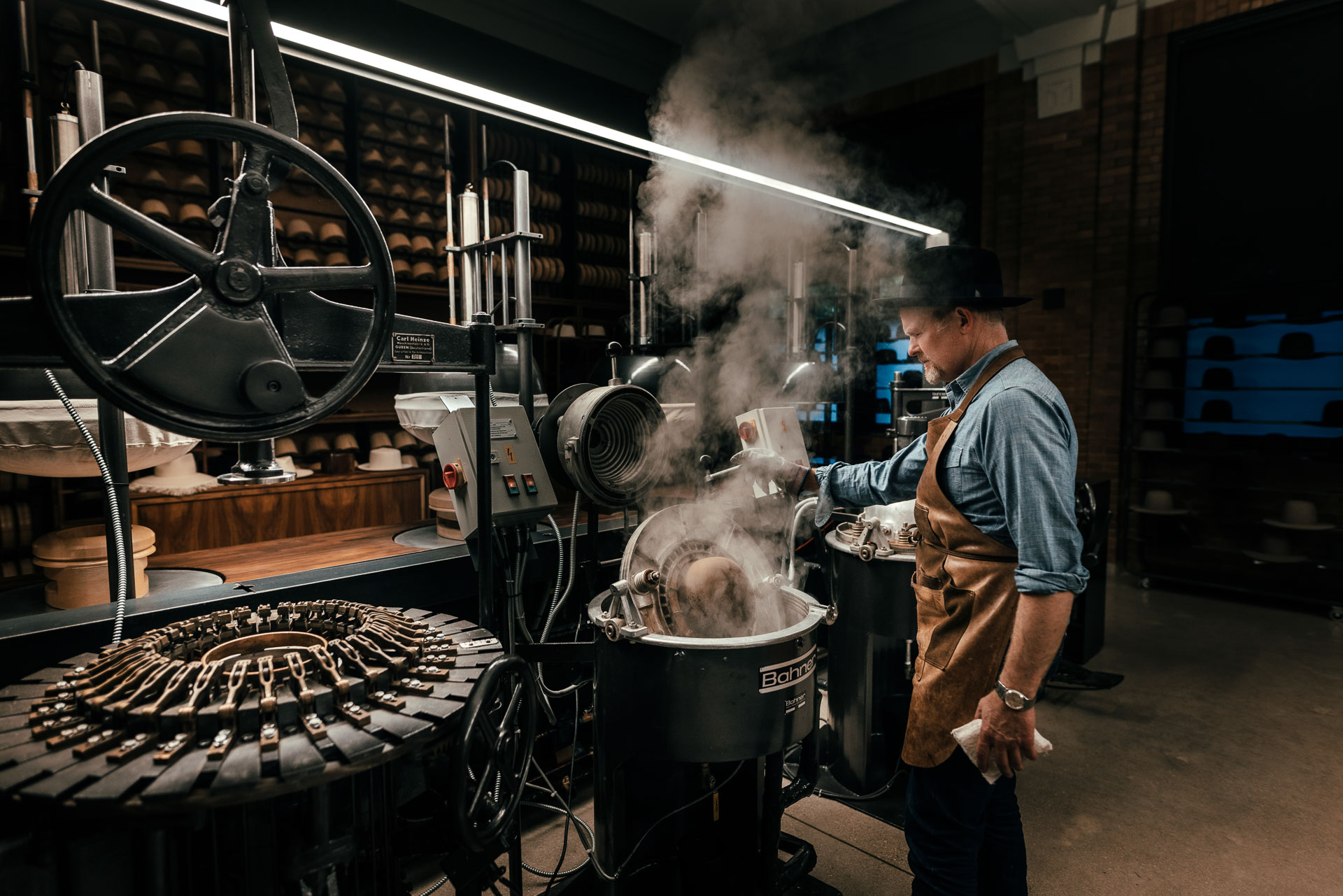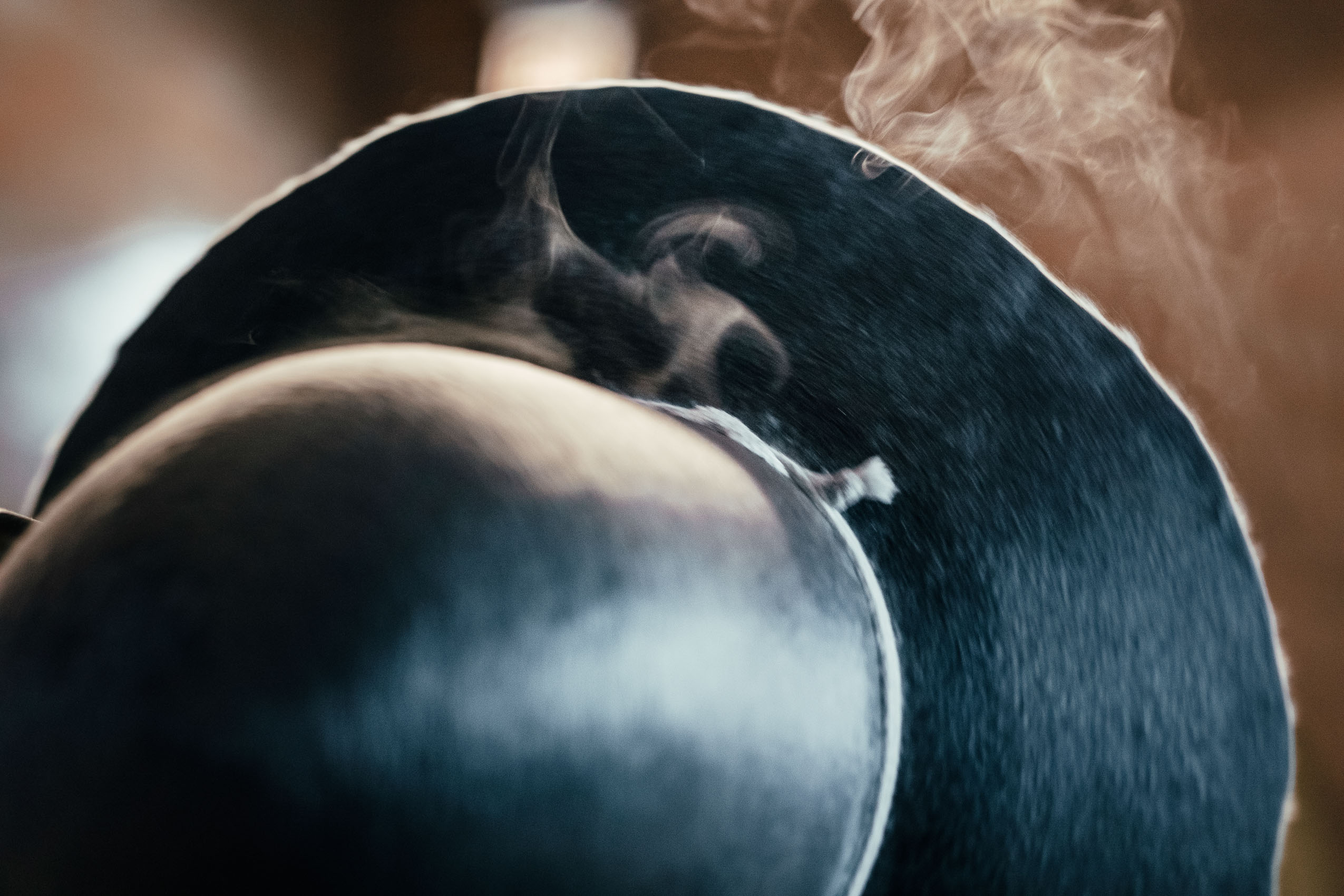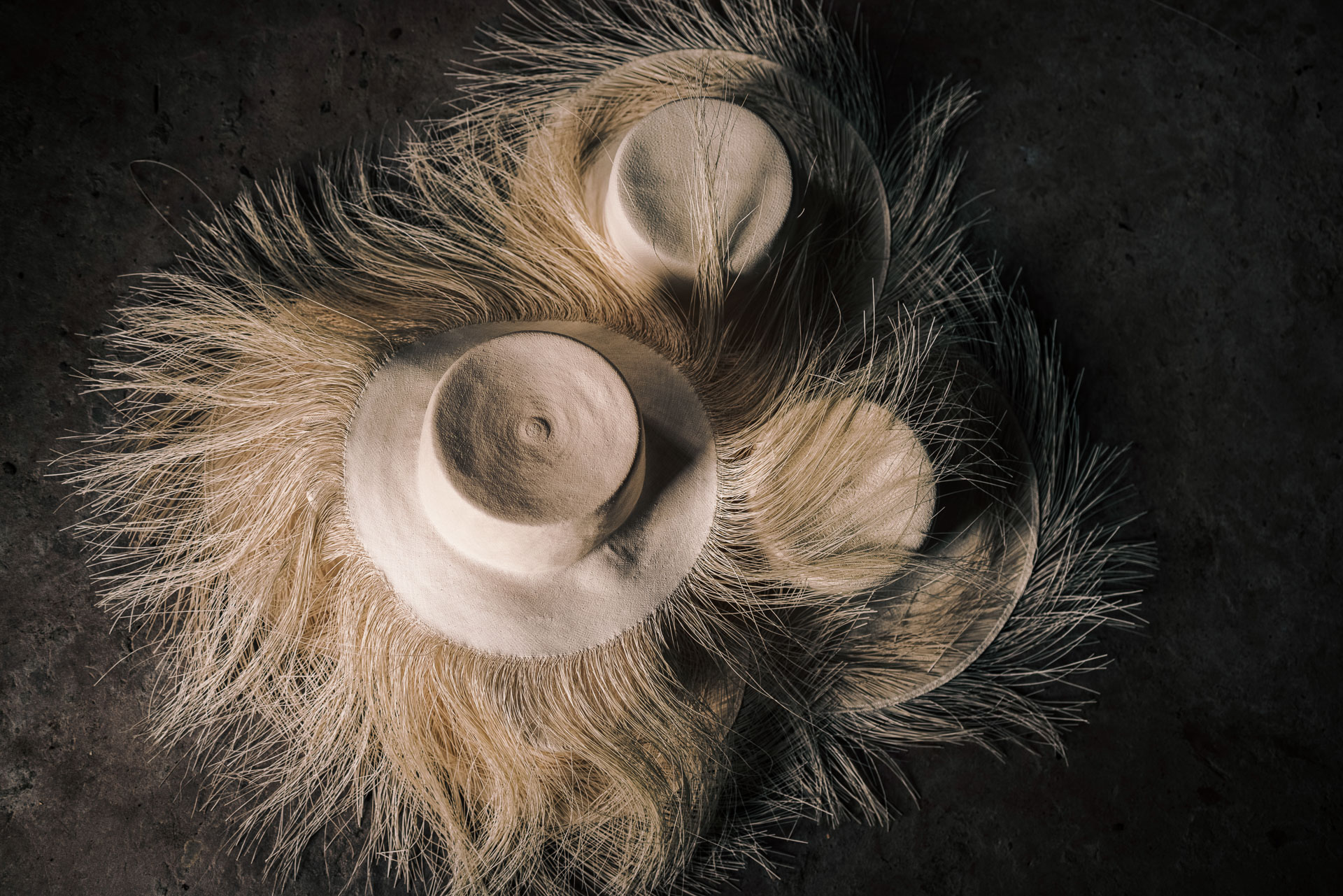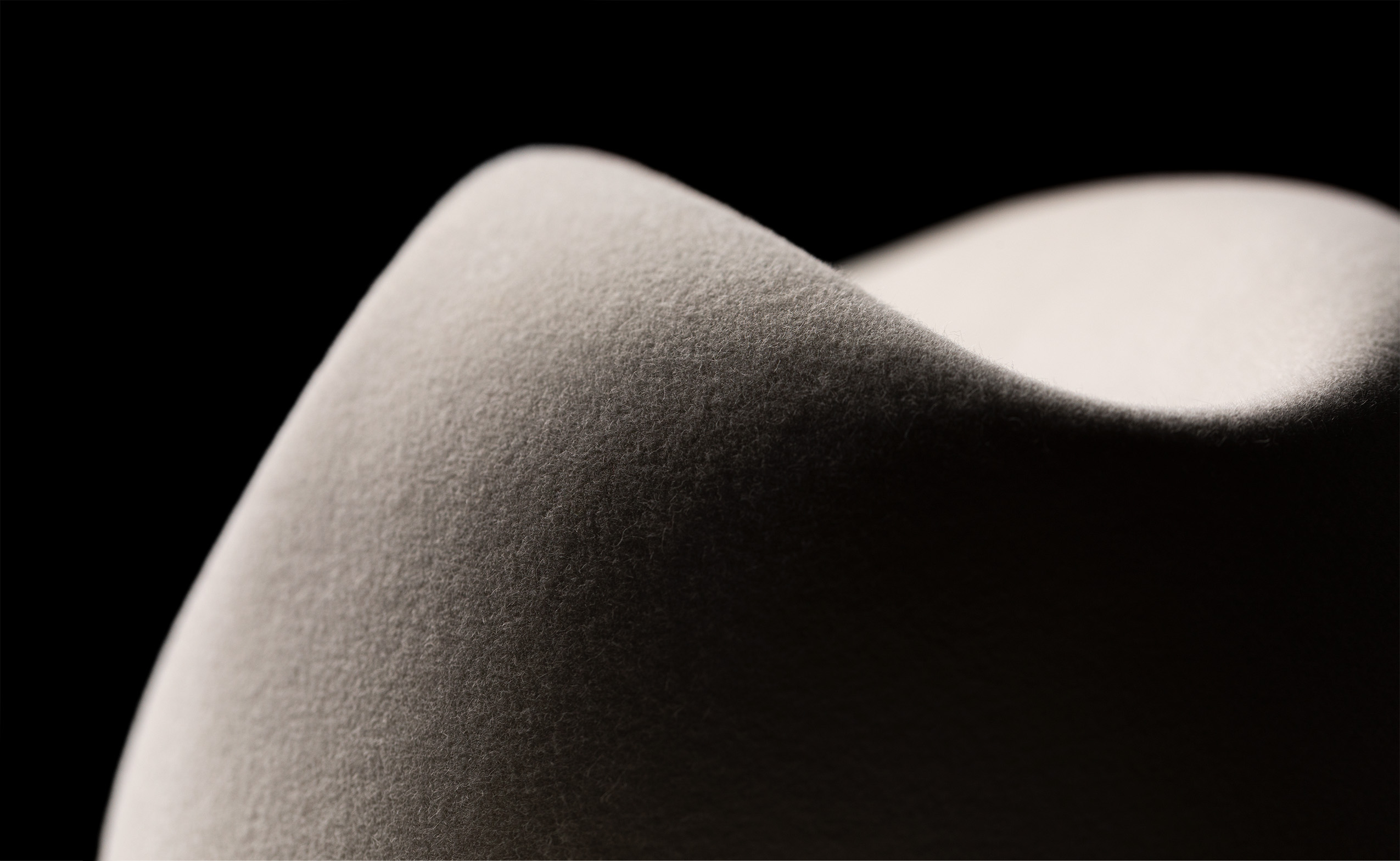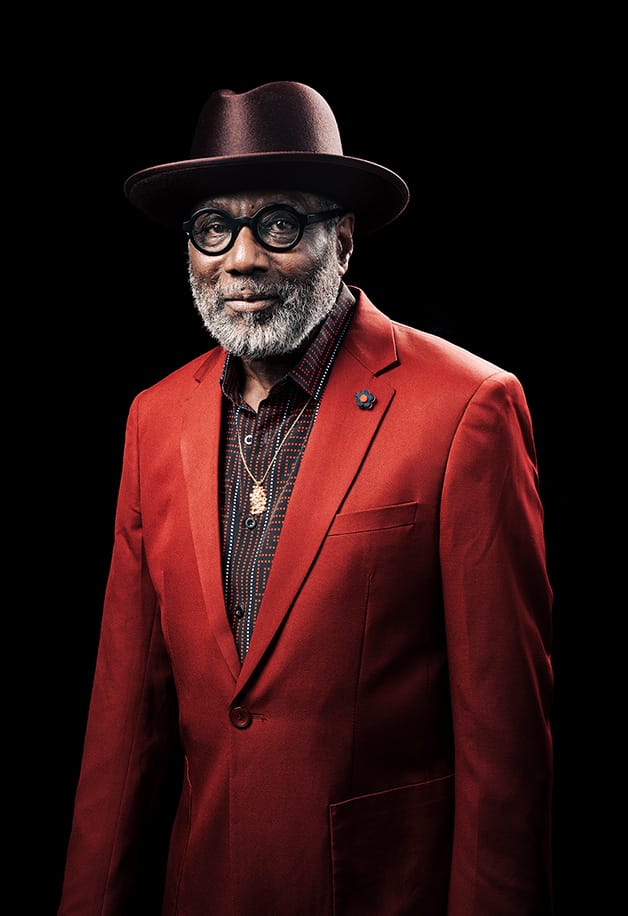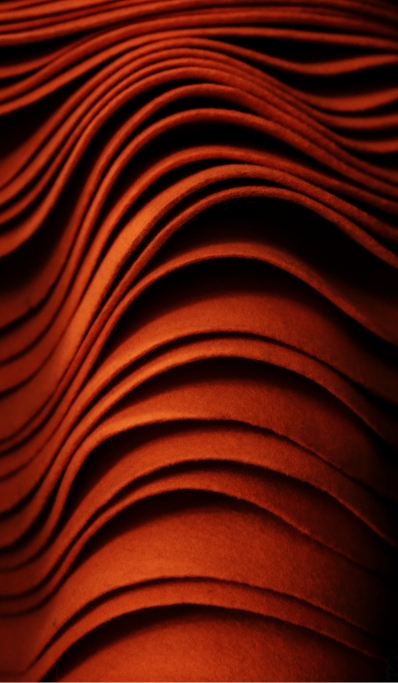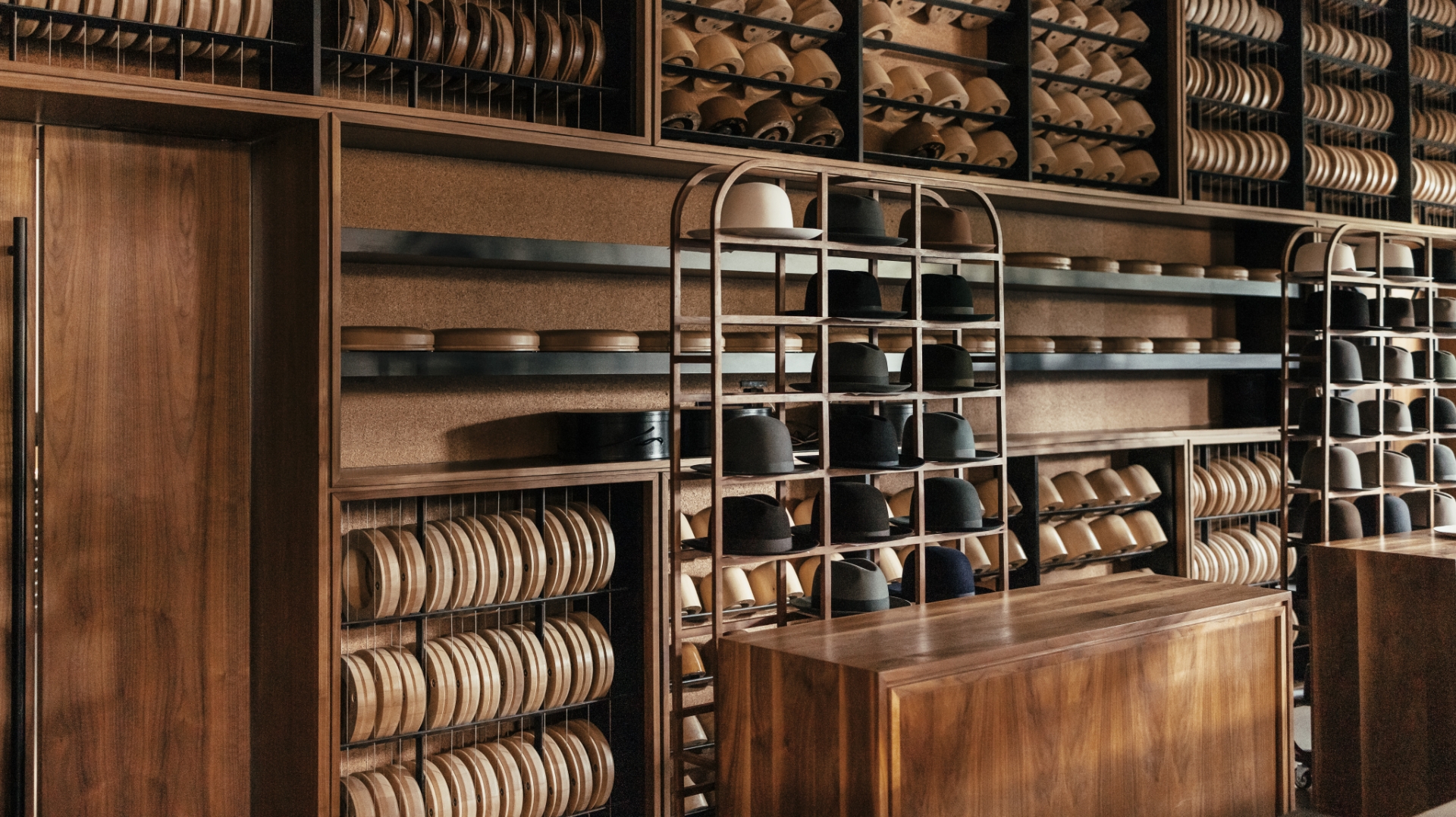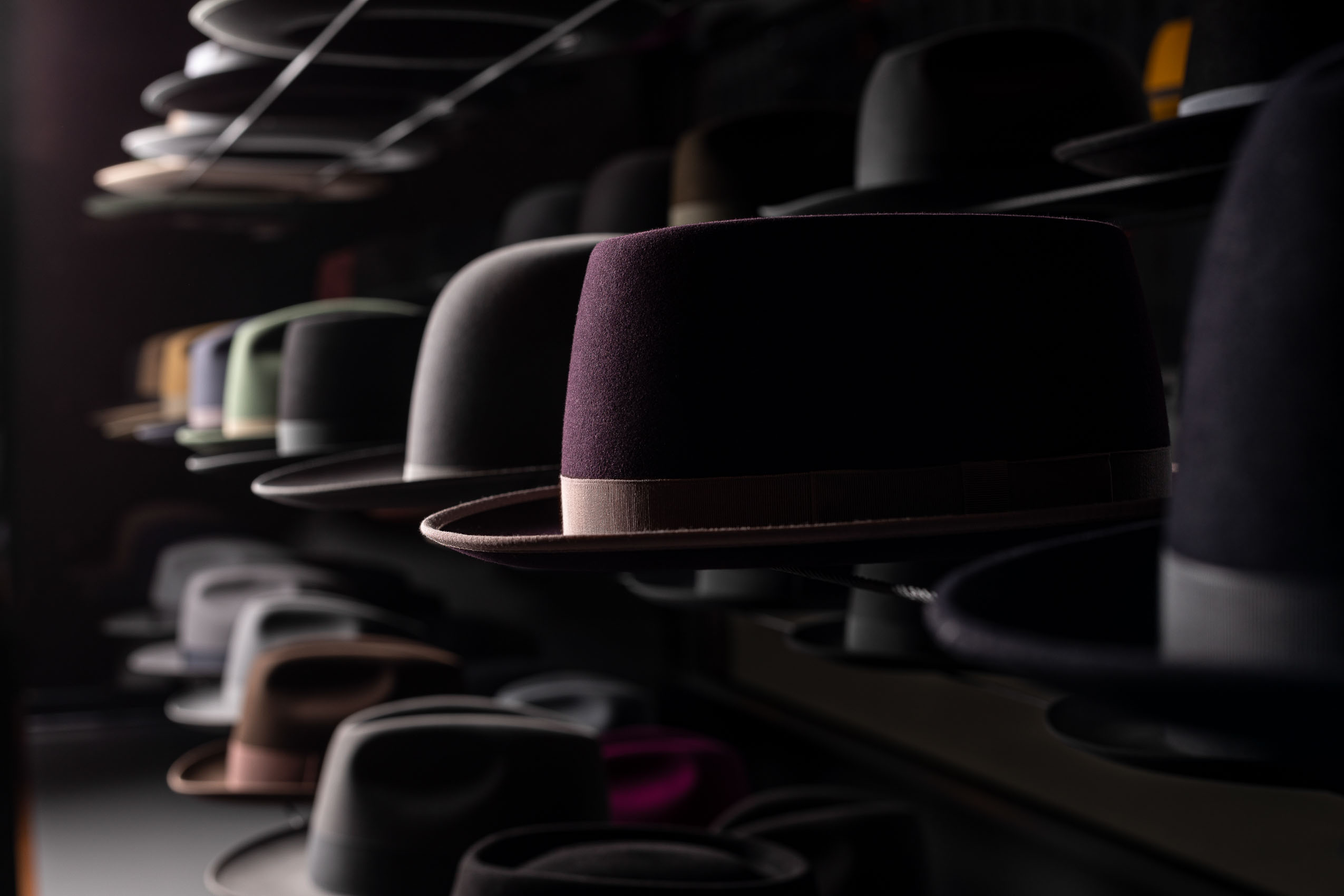
Making a felt
For the past 25 years, we have been able to closely study our hats as they return to the workshop to be cleaned and blocked after years of use in many diverse climates. It is from this close study that we have learned to formulate the raw product and refine our production techniques — always striving to deliver the best hat made.
Material Preparation
From the finest straw weavers in South America to our felt-makers in Europe, Optimo works closely with craftsmen across the world to source materials of exceptional quality, made exclusively for Optimo.
All our materials are sourced with a focus on social responsibility, preservation of fine craft and general sustainability.
When hat bodies arrive at Optimo they are stored in a climate-controlled cellar. The first stage of any order begins with selecting the ideal “hat body” of the correct size and color. It undergoes a thorough quality control inspection before it moves to blocking.
Blocking
The hat body now moves to the blocking stage, which transforms the raw hat body into its primary shape. This is a critical step which must be done properly to ensure a precise foundational structure.
The hat body is clamped, steamed, pulled taut, and a special crown mold is gently pushed into the humid and pliable material.
The amount of steam, stretch and time varies for different weights and types of felt, and can only be determined by experience.
The next step is “decatizing,” which slowly and gently “bakes” the hat bodies in a chamber of steam and circulating hot air. This is a secondary process to render the shape and size more exact and permanent.
After your hat body has been blocked and decatized, it will rest a few days for the fibers to relax and reach the appropriate humidity level for surface finishing. Fine surface finishing can be affected by even slight differences in humidity levels in the felt.
It has now been promoted from “hat body” to “hat”.
Surface Finishing
Much of the hatmaker’s art is performed in the surface finishing room. Optimo’s skilled craftsmen use rare vintage tools and machinery to pounce (shave), condition and polish both the crown and brim for all smooth-finish hats.
Other exotic finishes are worked with different tools and machines to achieve special finishes.
Different colors and weights of felts must often be treated differently, even when trying to achieve the same finish. Learn more about the wide range of finishes that Optimo offers.
A powerful dust collection system sucks most of the felt particles away from the material being worked. All the abrasive and dusty operations are done in the surface finishing room.
After surface finishing all hats are deep-vacuumed. A special machine from the 1940s, designed specifically for this purpose, sucks out minute particles of felt residue from the pores of the hat.
Small particles of dust can cause staining to hats as well as get into the finely tuned sewing machine parts. To make hats of Optimo’s quality, the workshop must be immaculate.
Finally, a thorough quality inspection is performed before proceeding to the next stage.
Trimming
Trimming refers to several important steps in hat finishing, including installation of the sweatband, linings, ribbon and edge treatments.
Following sweatband installation and brim cutting, a fine grosgrain ribbon is formed into a bow and sewn onto your hat.
Next, the inner lining is installed, made of bridal satin. It is both decorative and protective. This is done entirely by hand.
Optimo’s small team of expert trimmers have decades of combined experience.
Optimo’s trimmers are are also involved in the design of many of the hats they work on, collaborating closely with Graham on all aspects of trimming and other processes in hatmaking.
Their trained eyes and skilled hands have made some of the most exquisitely formed bows and accurate edge sewing the hat world has ever known. The laser-sharp work from an experienced trimmer will clearly differ from the work of a less experienced one.
The small scale of Optimo’s production strikes a harmonious balance between output and artistry. It also provides the entire team a complete understanding of all the steps in production.
Ordering a fully bespoke Optimo hat allows clients to have unique ribbons and trim designed especially for them.
The trimmers at Optimo have elevated their bow and ribbon work to an art form. Exceptional trimming adds another level of elegance and refinement to all Optimo hats.
After trimming the brims are given their shape in a process called flanging.
Final Finishing
All Optimo hats undergo several procedures and are constantly scrutinized for flaws and inconsistencies before they are finally ready to meet the customers.
Following trimming, your Optimo is given one final brim pressing (called flanging). Next, the brim is buffed and the entire hat undergoes a polishing or brushing, depending upon the finish.
Lastly, your Optimo is gently steamed and final inspected before being fitted into its hat box. Every detail is checked, one last time.
As a final finishing touch many clients request is a feather, which is usually worn tucked inside the center of the bow. Optimo uses only natural, undyed feathers, combined and hand tied in-house.
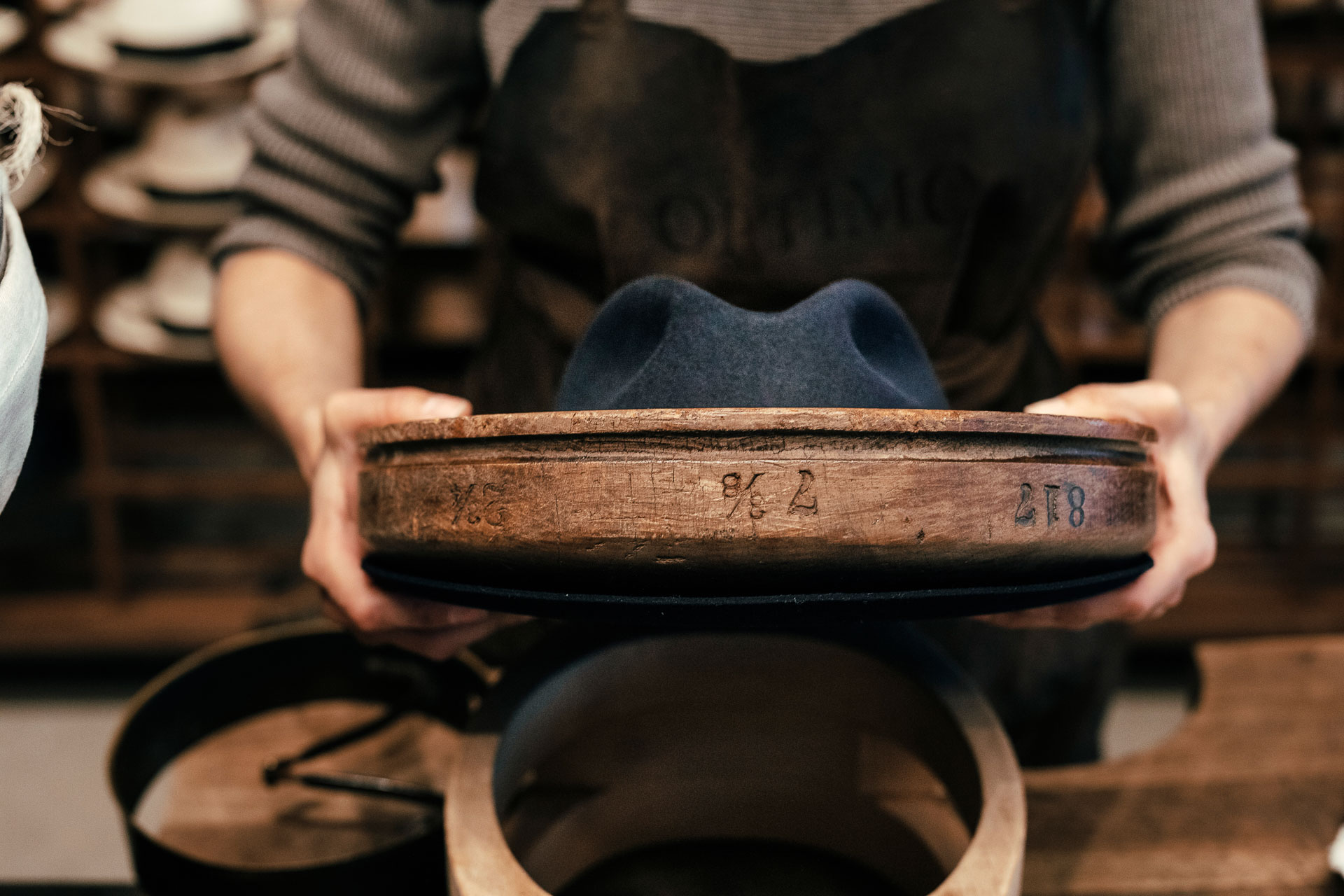
Learn more
